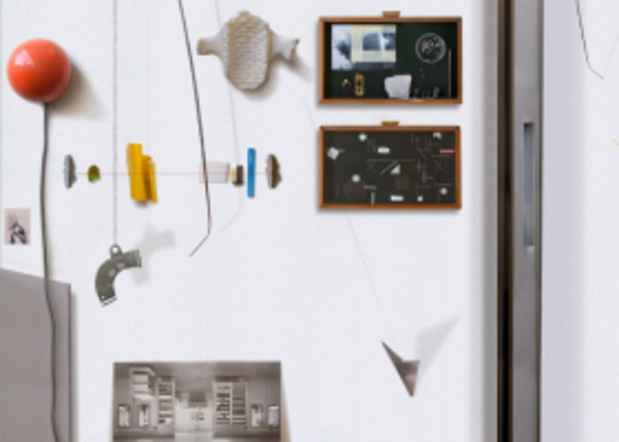“Decadal Variations” Exhibition
Andrea Meislin Gallery

This event has ended.
Andrea Meislin Gallery presents Decadal Variations; a celebratory exhibition, marking the gallery’s 10th anniversary. In conjunction with the exhibition Andrea Meislin Gallery will host a series of public programs featuring artist talks, film screenings, and live performances.
Since its inception in 2004, Andrea Meislin Gallery has presented over 60 exhibitions and the works of dozens of artists. Decadal Variations is an anthology, a historical overview and a vantage point to the future. The exhibition is a celebration of artistic appreciation by curators and cultural institutions, with each work being part of a major museum or public collection — attesting to the global recognition of artistic, aesthetic and cultural values.
While by a diverse group of artists, ranging in age, location, and nationality, the works highlight repeating themes in the gallery’s vast exhibition history: recurring aesthetic and artistic concerns, shared preoccupations, and a wide range of photographic practices. Personal and national identity; time and place; political commentary and social critique are the thematic threads that run the gamut of this show, tying together disparate and distant practices into one cohesive statement. Each work alone, and the exhibition as a whole, are representative of the gallery’s programming in the past decade and are evidence of the gallery’s commitment to curatorial recognition.
Barry Frydlender’s depiction of Israeli reality is joined by Tal Shochat’s utopian renderings of an Edenic existence. Ilit Azoulay and Daniel Bauer’s work, exhibited together for the first time, team to challenge our notions of order, balance and hierarchy within a photographic plane. Angela Strassheim and Naomi Leshem offer interpretations of the psychological conditions of youth in contemporary society, while Michal Chelbin, Vardi Kahana, Pavel Wolberg and Andy Freeberg’s works open a window into the inner worlds of inaccessible communities, rendering the invisible visible for a brief moment.
Although all the works shown are photographs, not all were made with the use of a camera. Daniel Bauer’s 75% Mattress (2002) was created simply with a scanner. Bauer focused on his marital and familial bed, by physically recording its surface, inch by inch, with a large scanner; he then digitally stitched the files together to create a remarkably life-like rendering of what he calls “the evidence of many years of life”.
Known for its multiplicity of details, Barry Frydlender’s work is the outcome of a laborious process of digital construction. Created out of hundreds of photos taken over long periods of time, Frydlender’s seamless assembly of frames creates the illusion of documentary photography. His large-scale work Blessing (2005) evokes the biblical era while engaging one of the many realities of life in Israel. It is both political and self-reflexive, and invites a subtle critical view into Israeli society.
Frydlender’s technological process can be seen in a way as a predecessor to Ilit Azoulay’s working methods and formal investigations. Azoulay works in photomontage and digital assembly to construct photographic compositions of imaginary environments. Using objects collected in construction and demolition sites in Tel Aviv, Azoulay’s compositions are archival and archaeological in nature. Her photographs turn mundane objects into precious artifacts. Through the archival process, the objects are now rendered as a testimony to that which has passed, to the residues of a not-so-distant history. The contemplation that follows this process reminds us of the significance of small histories within a broad social narrative.
While Bauer, Frydlender, and Azoulay’s practices are inherently explorations of the photographic medium, other artists choose a classical approach to photography to present artistic concerns and investigations. Pavel Wolberg’s Nataniya (2013), a photograph of a group of Hasidic Jews at a wedding, offers a rare glimpse into the insular and secluded communities of the ultra-orthodox sects in Israel. The composition is realistic and informative in nature, yet elusive and mystical—reflecting the feeling of the rituals Wolberg documents. Visually, Wolberg’s images take the vocabulary of his personal past in photojournalism; however, the sensitivity to detail and use of light and shadow immediately cast associations to the European Old Masters.
Media
Schedule
from October 14, 2014 to January 09, 2015